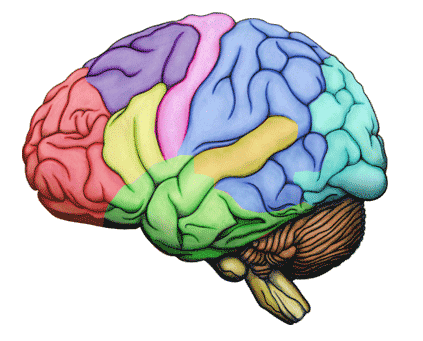
COGNITIVE NEUROSCIENCE

Eric Jensen of Jensen Learning on Brain-Based Learning Teacher Workshops
Tip: Click on the box to enlarge the box or go to the Video Files section
Brain Based Educational Practices

BRAIN BASED LEARNING
Educational Practices
Supported By
Brain Research
Based on Eric's video, how will you implement Brain-based learning in your classroom? Comment in your Facebook, and give the video a positive review!
Problem Based Learning
With its multiple connections, the human brain is wired to solve problems (Jensen, 2005, p. 115). Problem-based learning is also “apt to appeal to students’ motivation and engender emotional involvement, which can also create more extensive neural rewards” (Schunk, 2012, p. 66).
Simulations and Role Playing
Dramatizations have similar benefits to problem-based learning. Role playing helps students to engage actively and emotionally with the material. As Willis notes, “Role-playing activities in which each student portrays both the socially and academically dominant role and the excluded role are also powerful opportunities for enlightenment” (42).
Active Discussions
Instead of sitting and passively listening to a teacher, active discussions engage learners in an exchange of ideas, and “this cognitive activity helps to build synaptic connections and new ways of using information” (Schunk, 2012, p. 67). Students are exposed to a variety of opinions and ideas, and this activity helps them build synaptic connections.
Graphics
The findings from brain research support the fact that learning is improved when teachers use a variety of visual displays. Visual displays get the students’ attention, help with retention of material, and motivate students.
Positive Climate
A positive classroom environment encourages students to take risks and to learn. Students must feel safe and emotionally secure for effective learning to happen. Brain research “substantiates the positive effect that emotional involvement can have on learning and the building of synaptic connections” (Schunk, 2012, p. 67).
Cognitive Neuroscience research shows that various factors can arouse and maintain students’ attention. These factors include the following:
FACTOR - Importance
IMPLEMENTATION:
If a teacher announces that certain material is important, this will capture the students’ attention.
FACTOR - Novelty
IMPLEMENTATION:
The brain tends to focus on inputs that are novel or out of the ordinary. Varying materials and teaching methods gets students’ attention.
FACTOR - Intensity
IMPLEMENTATION:
Stimuli that are louder, brighter, or more pronounced attract more attention. For example, bright graphic displays will attract attention.
FACTOR - Movement
IMPLEMENTATION:
Movement of the teacher around the classroom also attracts attention.
Suggestions for Focusing
and
Maintaining Student Focus
The “process of forming and strengthening synaptic connections (learning) changes the physical structure of the brain and alters its functional organization . . . .The process of stabilizing and strengthening neural (synaptic) connections is known as consolidation” (p. 47). The following factors improve consolidation as they help the brain impose a structure on learning:
FACTOR - Organization
EXPLANATION:
Well organized material is easier to learn and recall. Time lines, graphs, charts, schemas, persona learning logs, etc. are a few examples of organizers.
FACTOR - Rehearsal
EXPLANATION:
Rehearsal is practice - whether rehearsing for a play or studying spelling words and their meanings. Rehearsal helps build memory networks.
FACTOR - Elaboration
EXPLANATION:
Elaboration is the process of expanding existing knowledge by adding to it or linking it to what one knows.


